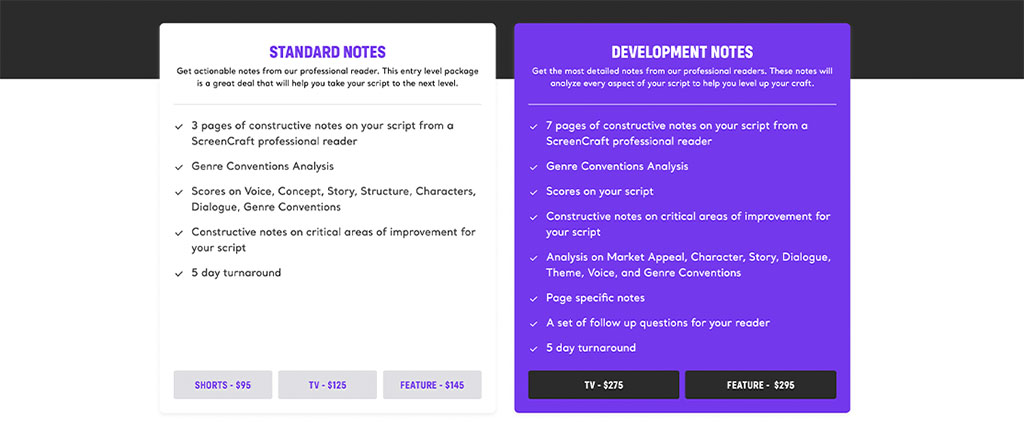Conflict is everything in stories. Without conflict, the narrative isn’t driven enough to engage an audience. External and internal conflicts are necessary to create character and story arcs that pull an audience into the story—and it is what keeps them invested throughout the duration of the movie or television episode (and series).
Here, we offer one 100 basic internal conflicts that you can use with your characters and stories.
100 Internal Conflicts for Your Screenplay
- Man vs. Self: Struggles with personal fears, doubts, or inner demons.
- Morality vs. Desire: The conflict between what is right and what one wants.
- Duty vs. Personal Happiness: Balancing obligations with personal well-being.
- Past vs. Present: Wrestling with events or decisions from the past.
- Ambition vs. Contentment: The drive for success conflicting with the desire for a simple life.
- Independence vs. Belonging: The need for self-identity versus fitting in.
- Courage vs. Fear: Overcoming fear to do what’s necessary.
- Confidence vs. Self-Doubt: Believing in oneself versus feeling inadequate.
- Acceptance vs. Rejection: The fear of being rejected versus the desire to be authentic.
- Hope vs. Despair: Holding onto hope in dire situations.
- Revenge vs. Forgiveness: Seeking vengeance or letting go and forgiving.
- Identity Crisis: Struggling with a sense of self and purpose.
- Truth vs. Deception: Deciding whether to tell the truth or maintain a lie.
- Love vs. Duty: Choosing between love and responsibilities.
- Temptation vs. Virtue: Resisting temptations or giving in to them.
- Accepting Mortality: Coming to terms with one’s own mortality.
- Optimism vs. Pessimism: Maintaining a positive outlook or succumbing to negativity.
- Perseverance vs. Surrender: Determination in the face of adversity.
- Guilt vs. Innocence: Wrestling with feelings of guilt or innocence.
- Attachment vs. Detachment: Balancing emotional connections with detachment.
- Self-Preservation vs. Sacrifice: Choosing one’s safety or sacrificing for others.
- Pride vs. Humility: Overcoming arrogance or embracing humility.
- Generosity vs. Selfishness: Acts of kindness versus self-centeredness.
- Trust vs. Suspicion: Building trust or harboring suspicion.
- Empathy vs. Apathy: Connecting with others or becoming emotionally detached.
- Impulse Control: Resisting impulsive decisions or actions.
- Public Image vs. Authenticity: Maintaining a facade versus being genuine.
- Denial vs. Acceptance: Refusing to accept a harsh truth or facing it head-on.
- Vulnerability vs. Invulnerability: Opening up to others or building walls.
- Freedom vs. Conformity: Embracing individuality versus conforming to societal norms.
- Cowardice vs. Bravery: Conquering one’s fear or succumbing to it.
- Materialism vs. Minimalism: Pursuit of wealth and possessions versus simplicity.
- Redemption: Seeking to atone for past mistakes.
- Grief vs. Moving On: Coping with loss and finding a way to move forward.
- Betrayal vs. Loyalty: Dealing with betrayal or remaining loyal to others.
- Fulfillment vs. Emptiness: Seeking a fulfilling life versus feeling empty.
- Desperation vs. Patience: Acting out of desperation versus waiting for the right time.
- Obsession vs. Balance: Struggling with obsessive behavior or finding equilibrium.
- Rationality vs. Irrationality: Making logical decisions versus acting irrationally.
- Forgiveness vs. Resentment: Choosing to forgive or holding onto resentment.
- Altruism vs. Self-Interest: Acting for the greater good versus pursuing personal gain.
- Accepting Change: Coming to terms with inevitable changes.
- Addiction vs. Recovery: Battling addiction or seeking rehabilitation.
- Survival Instinct vs. Self-Sacrifice: Prioritizing one’s own survival or sacrificing for others.
- Conscience vs. Immorality: Listening to one’s conscience versus engaging in unethical behavior.
- Optimism vs. Realism: Balancing optimism with a realistic perspective.
- Parental Expectations: Meeting or defying the expectations of parents.
- Skepticism vs. Faith: Struggling with doubt and faith.
- Competitiveness vs. Cooperation: Pursuing competition or fostering cooperation.
- Compassion vs. Indifference: Showing kindness and empathy versus indifference.
- Insecurity vs. Confidence: Overcoming feelings of insecurity.
- Ethics vs. Expediency: Choosing ethical actions over expedient ones.
- Moral Integrity: Upholding one’s moral principles in challenging situations.
- Narcissism vs. Selflessness: Balancing self-interest with concern for others.
- Responsibility vs. Irresponsibility: Accepting or avoiding personal responsibilities.
- Fear of Failure: Overcoming the fear of failing.
- Unrequited Love: Coping with love that is not reciprocated.
- Rebellion vs. Conformity: Resisting authority or adhering to societal norms.
- Defensiveness vs. Vulnerability: Being defensive or allowing oneself to be vulnerable.
- Escapism vs. Reality: Avoiding reality or facing it.
- Regret vs. Acceptance: Dwelling on past regrets or finding acceptance.
- Identity Theft: Dealing with identity theft or loss of identity.
- Selective Memory: Choosing to remember or forget certain experiences.
- Aging and Mortality: Coping with the process of aging and the knowledge of mortality.
- Infidelity: Dealing with the consequences of infidelity.
- Loneliness vs. Connection: Struggling with loneliness or seeking meaningful connections.
- Integrity vs. Corruption: Maintaining one’s integrity or succumbing to corruption.
- Judgment vs. Empathy: Passing judgment on others versus showing empathy.
- Fear of the Unknown: Dealing with the fear of what lies ahead.
- Competing Desires: Balancing conflicting desires or goals.
- Inadequacy vs. Competence: Overcoming feelings of inadequacy.
- Nostalgia vs. Progress: Holding onto the past versus embracing change.
- Resentment vs. Forgiveness: Letting go of resentment or holding onto it.
- Hesitation vs. Action: Overcoming hesitation to take decisive action.
- Cultural Identity: Navigating conflicts related to cultural identity.
- Anger Management: Controlling anger and its destructive potential.
- Perfectionism: Striving for perfection versus accepting imperfections.
- Fulfilling Expectations: Meeting the expectations of others or following one’s path.
- Fear of Abandonment: Coping with the fear of being abandoned by loved ones.
- Trust Issues: Struggling to trust others due to past experiences.
- Imposter Syndrome: Feeling like a fraud despite success.
- Envy vs. Contentment: Overcoming envy and finding contentment.
- Happiness vs. Success: Balancing personal happiness with achieving success.
- Empowerment vs. Victimhood: Taking control of one’s life versus feeling like a victim.
- Attachment to Material Possessions: Letting go of material attachments.
- Distrust of Authority: Questioning authority figures or blindly following them.
- Confronting Prejudices: Overcoming personal prejudices and biases.
- Gender Identity: Coming to terms with one’s gender identity.
- Ethnic Identity: Navigating conflicts related to ethnic identity.
- Faith Crisis: Questioning one’s religious beliefs.
- Resisting Change: Rejecting change or embracing it.
- Pacifism vs. Aggression: Choosing non-violence or resorting to aggression.
- Balance of Power: Managing power and its impact on others.
- Existential Crisis: Contemplating the meaning of life and existence.
- Desire for Revenge: Seeking revenge versus letting go of anger.
- Inner Strength: Discovering and tapping into one’s inner strength.
- Fear of Rejection: Facing the fear of rejection in personal relationships.
- Fear of Commitment: Overcoming the fear of commitment in relationships.
- Fear of Change: Dealing with the fear of changes in one’s life.
- Ego vs. Humility: Balancing ego and pride with humility.

What Are External Conflicts?
Unlike internal conflicts, external conflicts refer to the specific story conflict centered around the main protagonist, encompassing all outwardly displayed conflict elements within the context of your cinematic narrative.
The protagonist must undergo a visible physical journey that unfolds for all to see. Without external conflicts, there is nothing compelling to be shown on the screen.
External conflicts create an external arc that serves as the conduit drawing the audience into the character’s innermost emotions. Without external actions, reactions, and ensuing consequences centered around the external conflicts the characters face, the visual narrative lacks substance. Film and television rely on their visual nature to convey a compelling story, so external conflicts are a must.
Read More: Action, Reaction, Consequences: Exploring Your Hero’s External Arc

What Are Internal Conflicts?
Internal conflicts delve into the hidden or neglected inner emotions of the protagonist and their evolution throughout the story. This becomes a character’s internal arc, which is linked to the external arc within the main protagonist’s storyline.
The external arc provides a window into the character’s inner emotional landscape. If the external arc showcases the character’s physical journey, the internal arc is the emotional voyage that resonates with the audience—connecting the audience and the protagonist through empathy and catharsis.
But our primary connection with characters comes not from their external arcs (unless we have personally experienced the physical challenges the protagonist faces) but from their internal arcs, as emotions are universally relatable.
- In Star Wars, we may not find common ground with Luke Skywalker embarking on a galactic quest to confront an empire. However, we can empathize with a young individual navigating the challenges of growing up and searching for purpose.
- In Die Hard, we may not identify with a police detective besieged by terrorists within Nakatomi Tower while striving to save innocent hostages. Yet, we can empathize with a man struggling to mend his marriage, realizing he could have done more to salvage it before catastrophe struck.
- In First Blood, we may not empathize with a Special Forces Vietnam Veteran taking on local and state authorities, along with the National Guard. But, we can empathize with a man who feels adrift in the very country he fought for upon his return.
You can also use them as intriguing story prompts to find and develop your next story to tell.
WANT MORE IDEAS? TAKE A LOOK AT OUR OTHER STORY PROMPTS!
Get actionable Drama Notes from a professional reader with real industry experience!
Ken Miyamoto has worked in the film industry for nearly two decades, most notably as a studio liaison for Sony Studios and then as a script reader and story analyst for Sony Pictures.
He has many studio meetings under his belt as a produced screenwriter, meeting with the likes of Sony, Dreamworks, Universal, Disney, and Warner Brothers, as well as many production and management companies. He has had a previous development deal with Lionsgate, as well as multiple writing assignments, including the produced miniseries BLACKOUT, starring Anne Heche, Sean Patrick Flanery, Billy Zane, James Brolin, Haylie Duff, Brian Bloom, Eric La Salle, and Bruce Boxleitner, the feature thriller HUNTER’S CREED, and many produced Lifetime thrillers. Follow Ken on Twitter @KenMovies and Instagram @KenMovies76.
The post 100 Internal Conflicts Your Characters Can Face appeared first on ScreenCraft.
Go to Source
Author: Ken Miyamoto

